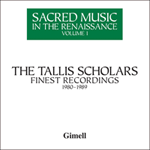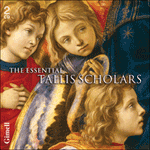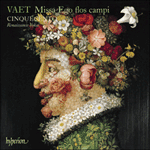
Welcome to Hyperion Records, a British classical label devoted to presenting high-quality recordings of music of all styles and from all periods from the twelfth century to the twenty-first.
Hyperion offers both CDs, and downloads in a number of formats. The site is also available in several languages.
Please use the dropdown buttons to set your preferred options, or use the checkbox to accept the defaults.

from notes by Stephen Rice © 2009
extrait des notes rédigées par Stephen Rice © 2009
Français: Hypérion
aus dem Begleittext von Stephen Rice © 2009
Deutsch: Viola Scheffel
 My Beloved's Voice My Beloved's VoiceMark Williams leads the Choir of the Jesus College Cambridge through an evocative selection of choral works inspired in varying ways by the Songs of Songs.» More |
 Queen of Hearts Queen of HeartsMeticulously planned and immaculately performed, ‘Queen of Hearts’ is one of those fascinating projects from The Gesualdo Six in which music from five centuries ago is tellingly matched with that of today. Here, the worlds of Church and State come ...» More |
 Renaissance Radio Renaissance RadioSacred Music from the Renaissance Era for Celestial and Secular Radio. When Peter Phillips founded The Tallis Scholars in 1973 sacred vocal music from the Renaissance Era was seldom heard on radio. Now it is firmly established as one of the great ...» More |
 Sacred Music in the Renaissance, Vol. 1 Sacred Music in the Renaissance, Vol. 1The first of three volumes featuring The Tallis Scholars' finest recordings, one for each decade, and each offering over five hours of the award-winning performances that helped establish Renaissance Polyphony as one of the great repertoires of we ...» More |
 The Essential Tallis Scholars The Essential Tallis Scholars"I am delighted to recommend this selection from our recordings. It is an excellent introduction to our work and to Renaissance music in general." (Peter Phillips)» More |
 Vaet: Missa Ego flos campi & other sacred music Vaet: Missa Ego flos campi & other sacred musicThe vocal sextet Cinquecento are rapidly becoming one of the most admired early music ensembles recording today. Their latest release presents the music of Jacobus Vaet, repertoire they began to explore in their first disc for Hyperion (Music for ...» More |

